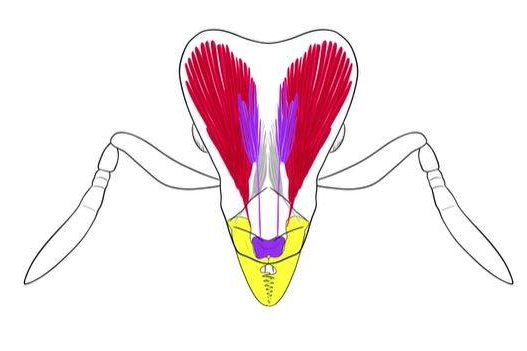Researchers say the trap-jaw of trap-jaw ants has evolved between seven and ten times in separate species around the world. Photo by Booher DB et al./PLOS Biology
March 2 (UPI) -- How did the trap-jaw ant evolve such a complex mechanism for snatching its prey?
Today, the mandibles of trap-jaw ants take many forms, suggesting a tremendous level of anatomical sophistication, the origins of which have remained elusive -- until now.
According to a new study, published Tuesday in the journal PLOS Biology, the trap-jaw evolved independently between seven and ten times.
The trap jaw's convergent evolution at least partially explains why it evolved such tremendous diversity across the world. Ironically, it was that diversity that made tracing the origins of the trap jaw so difficult in the first place.
"These are hyper-diverse ants, there are over 900 described species around the world and many more species are waiting to be discovered," lead researcher Evan Economo, professor at the Okinawa Institute of Science and Technology in Japan, told UPI in an email.
"We examined thousands of specimens from all over the world, from Madagascar to New Guinea to Costa Rica. That's great, because it gives us lots of data and opportunity to understand evolution, but is also just a massive task to organize and study so many species," Economo said.
Gripping jaws rely on muscles to be opened and clinched shut, but the jaws of trap-jaw ants work more like a mouse trap, storing energy as they're latched open. When released, that energy fuels a deadly snap of the jaws.
"Trap-jaw ants are fascinating devices capable of incredible speeds," Economo said. "As evolutionary biologists we want to understand how such complex structures and mechanisms evolve from something simpler."
To find out, Economo and his colleagues used genetic sequencing to reconstructed the phylogeny of the trap jaw ant. By building a family tree, researchers were able to better understand the relationships between different trap-jaw ant lineages.
Next, scientists used x-ray micro-CT scanning to build 3D models of the jaws of different trap-jaw ants, in order to better understand the similarities and differences between the trap-jaws of different species and lineages.
"Then we use quantitative models to reconstruct the most likely evolution of these traits on the tree," Economo said. "Based on how related all the trap-jaw forms are, we can infer the likely number of evolutionary events."
The data showed that trap-jaw ant species and non-trap-jaw ant species found on the same continent are more closely related than trap-jaw ant species from different continents. The models determined the trap-jaw evolved independently between seven and ten times.
Researchers also determined that just a simple tweak to the jaw mechanisms of ancestral ants allowed different ant lineages to independently develop trap-jaws.
"On the base of the mandible there is a 'basal mandibular process' -- a small projection that sticks out from the mandible," Economo said. "Normally, it doesn't interact with another structure, the labrum, that is usually located between the mandible and likely serves a sensory function."
"But with slight realignments it can start to catch the labrum, and stops the mandible from closing. Now, the muscle that pulls the labrum down controls mandible closure, and the system can store and quickly release energy, like when you snap your fingers," Economo said.
According to the phylogenic analysis and quantitative modeling, the simple tweak jumpstarted the tremendous level of trap-jaw diversity found today.
Interestingly, researchers found disparate ant lineage species, after independently evolving trap-jaws, diversified in very similar ways. Trap-jaw ant lineages in different parts of the world evolved long and short trap-jaws, following remarkably similar speciation patterns.
Economo said evolutionary biologists are still working out how to explain the phenomenon.
"I think it is fair to say it is still an open question," he said. "However, one scenario that may promote repeatability in evolution is when there is a pathway of small changes that lead between two very different forms. When evolution can follow stepping stones of small changes, where each step is itself functional, it becomes more likely that it can reach a complex endpoint. That appears to be the case here."
"As for why the same diversity of forms evolve in different places, it likely reflects mandibles optimized for different kinds of prey or hunting strategies, although our understanding of that is still fragmentary," Economo said.
In followup studies, Economo and his research partners plan to explore the evolutionary changes that inspire trap jaw on the molecular level.
He said the scientists want to know whether the same kinds of genetic mutations in different ant lineages produced the physiological changes that made the trap-jaw possible.















